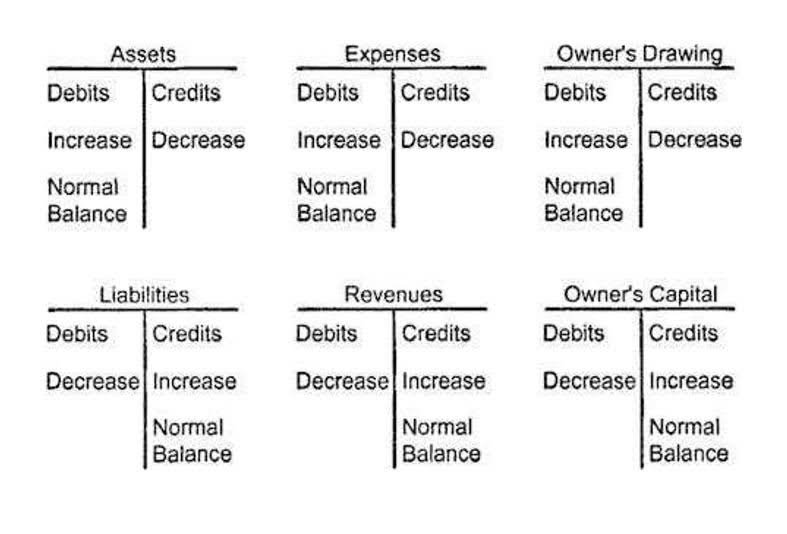
Payroll processing offices use checking account numbers to set up direct deposit payments for employees. Rebecca Lake is a certified educator in personal describe the two parts of an account number finance (CEPF) and a banking expert. She’s been writing about personal finance since 2014, and her work has appeared in numerous publications online.
Uterus: Anatomy, Function, Size, Position & Conditions – Cleveland Clinic
Uterus: Anatomy, Function, Size, Position & Conditions.
Posted: Wed, 03 Aug 2022 07:00:00 GMT [source]
A check’s last set of digits represents the check number (labeled “3” in the image above). This is typically fewer digits than the bank routing or checking account number. When you look at the front of a check, you’ll see a row of numbers at the bottom. Specifically, you should see three groups of numbers, separated by spaces or special characters. If there are more or fewer than nine digits, odds are you’re looking at your checking account number (labeled “2” above).
Find The Best High-Yield Savings Accounts Of 2024
While this is the same information as the fractional ABA, the routing number along the bottom of the check is written in a specific font with a special ink. Known as “Magnetic Ink Character Recognition,” or MICR, this allows checks to be easily read and processed by computers. The payer signs the check at the line in the bottom right-hand corner of the check.
- This article will explore the history and precise meaning of account numbers.
- When you log in to online or mobile banking, you may only see the last four digits of your account number displayed.
- The payer signs the check at the line in the bottom right-hand corner of the check.
- Clients can have several accounts, each with its own account number, although the routing number (the financial institution that maintains the customer’s account) stays the same.
- Most QuickBooks Online plans, for example, support up to 250 accounts.
- An account number acts as a key to unlock the doors of online banking.
- CFI is the official provider of the Commercial Banking & Credit Analyst (CBCA)™ certification program, designed to transform anyone into a world-class financial analyst.
Routing numbers are required for financial institutions to process transactions like direct deposits, check deposits, loan payments, and wire transfers. In the United States, each bank assigns account numbers using its own methodology, kept private for security reasons. Most bank account numbers have between 8 and 12 digits, though they can range from 5 to 17. To protect account numbers from fraud, financial institutions may also use multi-factor identification, two-step verification, and other security measures.
Protecting Account Numbers From Fraud
The U.S. is the only country that uses ABA routing numbers to identify banks when sending and receiving money. Foreign banks use IBAN, which is short for International Bank Account Number. If you have any type of bank account, it’s worth knowing about these numbers—and where to find them.
- You may be able to find this number right on the homepage of the bank’s website.
- Some of them will allow you to write in missing information such as a phone number.
- A phone number and address may be included, or you might just see the bank’s logo.
- The individual’s bank account number works together with the routing number to identify the right account holder at the right institution.
- Bank accounts have existed since ancient Mesopotamia, but the account number is a more recent invention.
- If your checking account comes with paper checks, they’re the first place to search for your routing number.
An individual may have several accounts, each with a distinct account number. In addition, account numbers could alter if one bank combines with another or buys another bank. Legally, banks are required to inform account holders of any changes to their accounts. An account number acts as a key to unlock the doors of online banking. It’s a critical piece of information, but also a highly confidential one. In today’s digitally interconnected world, your account number isn’t just a number.
Why You Should Understand a Check’s Format
IBAN follows a structure of checking digits to facilitate sanity check, which is all about detecting and eliminating instances of duplicated, omitted, or mistyped characters. It allows validation at the point of data entry where a program validates the account number, number of characters, account number format, and country code. Traditionally, each account in the COA is numbered, and accountants can quickly identify its type by the first digit. For example, asset accounts for larger businesses are generally numbered 1000 to 1999 (or 100 to 199), and liabilities are generally numbered 2000 to 2999 (or 200 to 299). Small businesses with fewer than 250 accounts might have a different numbering system.
Only the payee is allowed to deposit the check, cash it, or endorse it to someone else. But once you understand the different parts of a check, you’ll feel confident completing, receiving, and depositing paper checks. The individual’s bank account number works together with the routing number to identify the right account holder at the right institution. This system dates back to 1910 and was developed initially as a way to help bank clerks sort through piles of checks and assign them to the correct drawer. Today, electronic services use them in much the same way for wire transfers, to draw a payment from a deposit at the correct institution. These are just some of the means of protecting users’ bank account numbers in an increasingly vulnerable online environment.

Leave a Reply